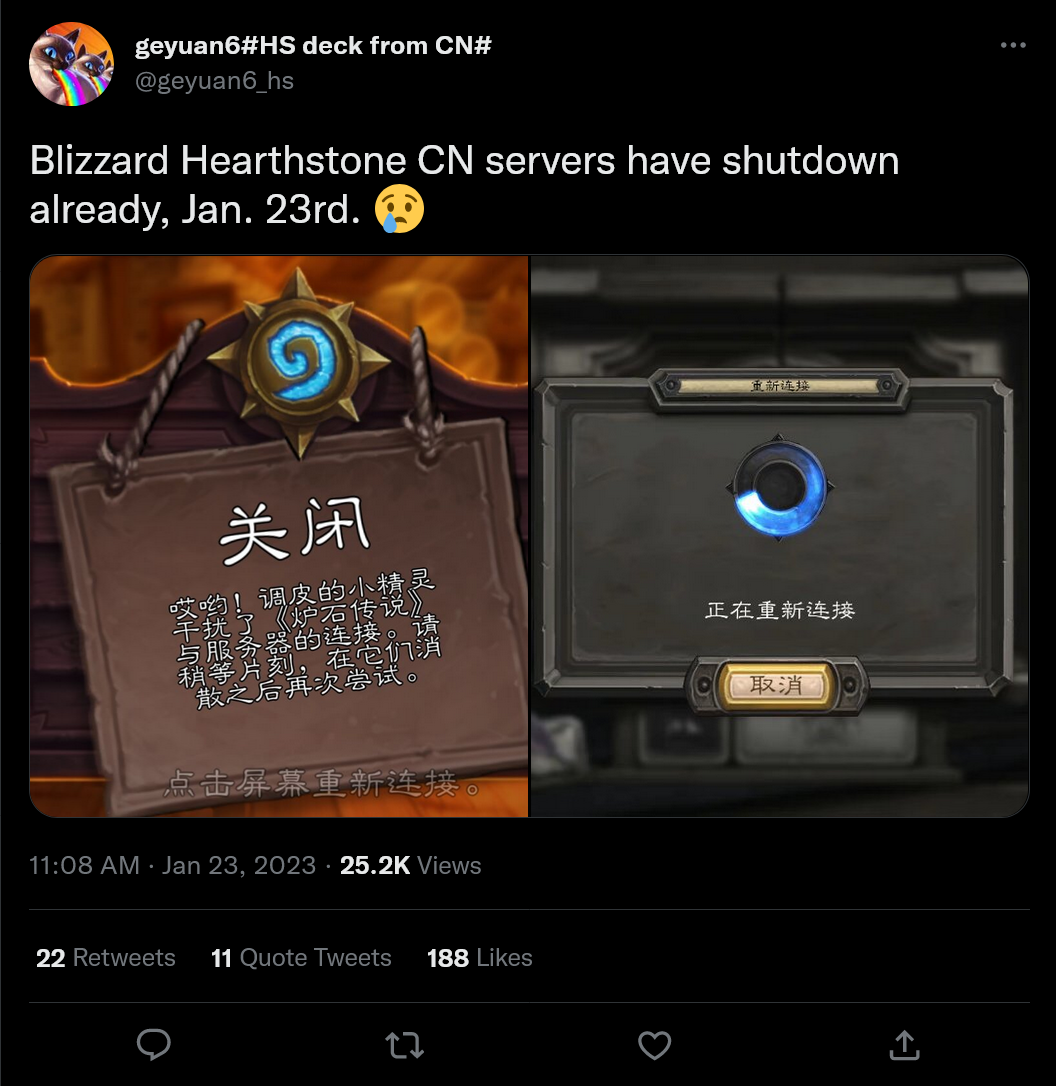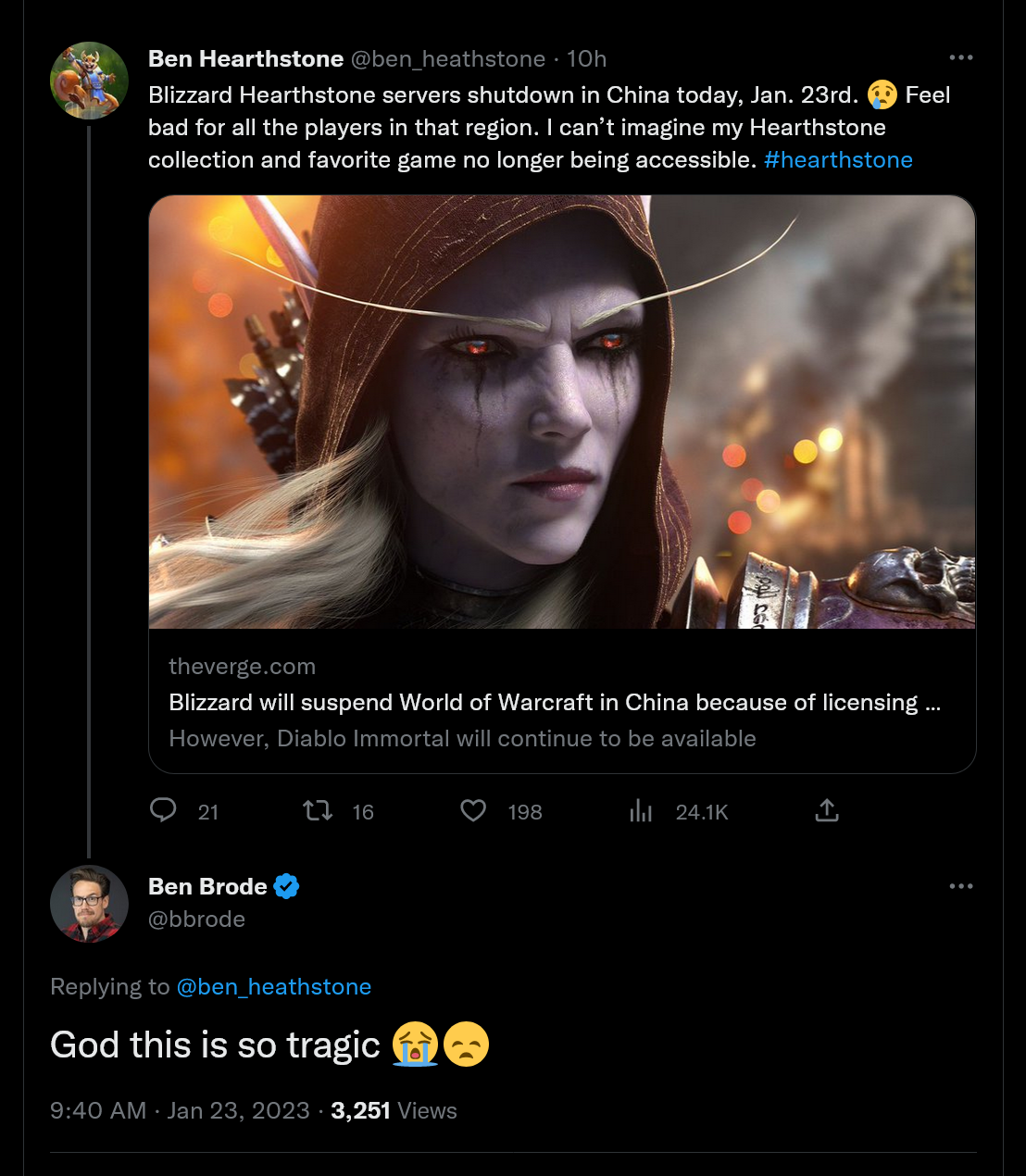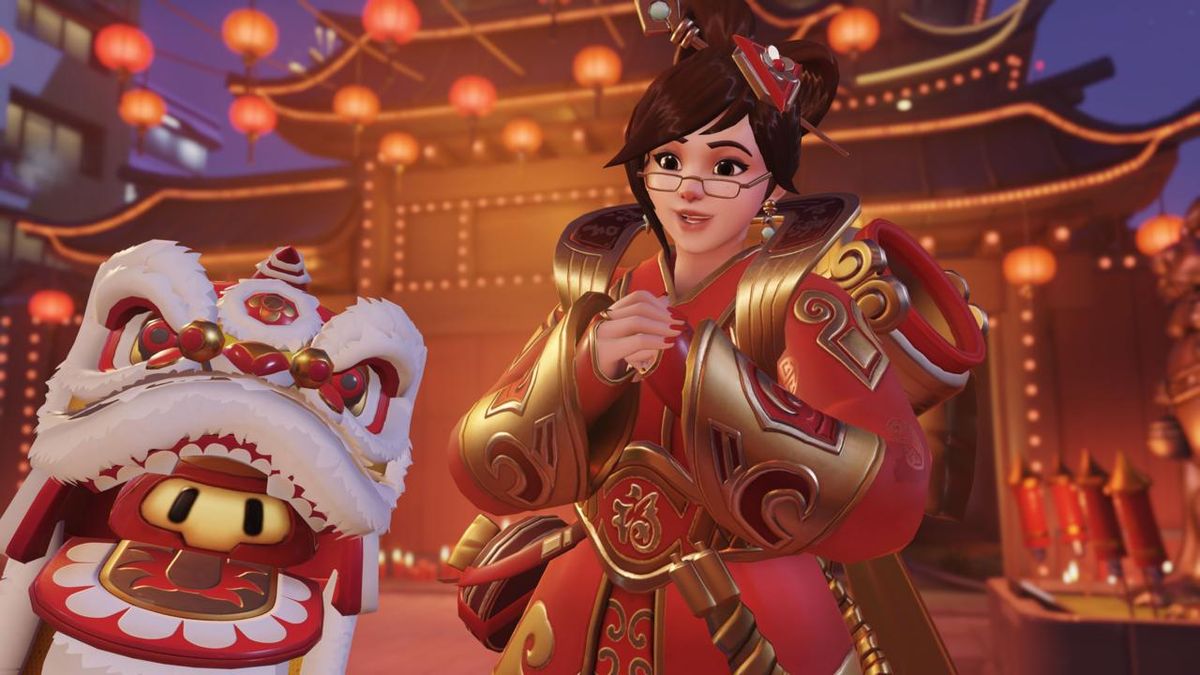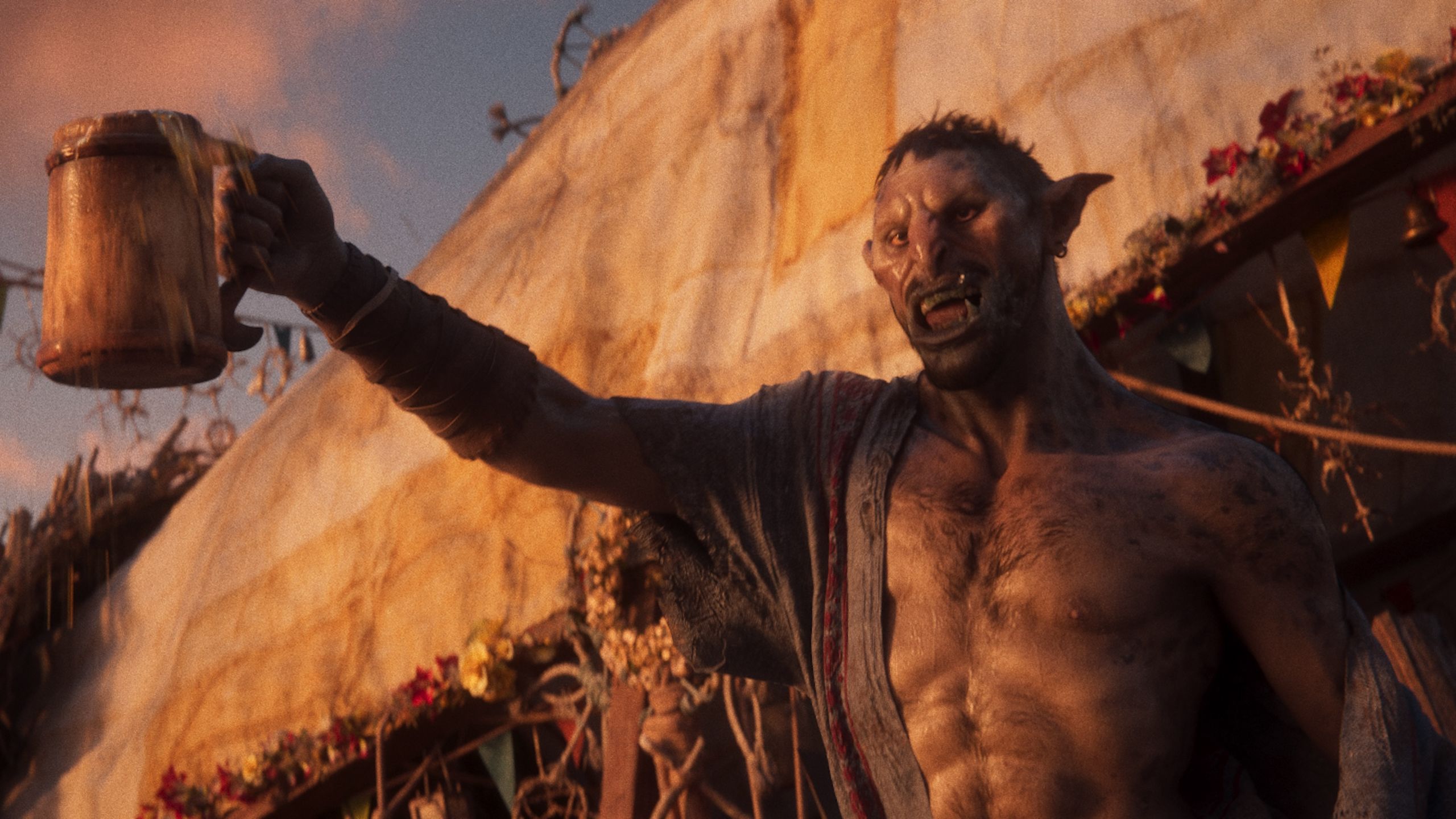January 23 has now come and gone in China, and that means Blizzard games including World of Warcraft, Hearthstone, Diablo 3, and Overwatch have been shut down in the country, with no return currently in sight.
The shutdown isn’t a surprise: It was first announced in November 2022 (opens in new tab), when Blizzard and Chinese publisher NetEase were unable to reach a renewal agreement on their partnership, and then reaffirmed just a week ago. But it’s literally the end of an era: NetEase has been publishing Blizzard’s games in China for 14 years, a partnership that NetEase CEO William Ding said fell apart over “material differences on key terms (opens in new tab).”
Specific reasons for the breakdown weren’t cited, but naturally there were plenty of pointed fingers. In a November message on LinkedIn, NetEase president of global investments and partnerships Simon Zhu said “developers and gamers will have a whole new level understanding of how much damage a jerk can make” when the full story comes to light, while Blizzard more recently placed the blame on the shutdown squarely on the shoulders of NetEase: “It is a pity that NetEase is not willing to extend services of our game for another six months on the basis of existing terms as we look for a new partner,” it said in a statement last week.
Regardless of who is truly at fault, the fact is that the shutdowns are a very big deal. There’s a massive audience for these games in China: Sky News (opens in new tab) says there are an estimated three million WoW players in China, and in 2019 Chinese Hearthstone pro Liooon—real name Li Xiaomeng—became the first woman to win the Hearthstone Grandmasters Global Finals (opens in new tab).
And just imagine what it would be like if Blizzard pulled the same thing in North America—that one day WoW, Diablo 3, Overwatch 2, and all the rest of them were just gone. I don’t want to overstate things, but in videogame terms at least it would be absolutely cataclysmic. And VPNs aren’t going to save the day here: They can enable Chinese players to access games in other regions, but existing accounts won’t go with them—Hearthstone accounts are tied to the region in which they were created, and China has its own unique edition of World of Warcraft—which means that any money spent on cosmetics or DLC is effectively gone.
A number of Blizzard fans in China shared their upset about the shutdown on Twitter and Chinese social media site Weibo (via The Guardian (opens in new tab)):

(opens in new tab)
- “It’s the end.”
- “The two companies have taken players hostage.”
- “It was not just a game. It was also the memories of a whole generation.”
Former Hearthstone game director Ben Brode, who’s now heading up work on Marvel Snap, made his own thoughts clear on Twitter:

(opens in new tab)
(Ben Brode and Ben Hearthstone, for the record, are different people.)
The good news for gamers in China is that the situation may not be permanent. Blizzard has previously said that it’s looking for a “new partner” to handle its games in China—all videogames in China are required by law to have a Chinese publisher—and a Blizzard China representative told The Guardian that the shutdown is not “the end,” but just a “temporary unhappy suspension.” Given the amount of money being left on the table, I can’t see Blizzard just letting it slide for very long.
It’s also worth remembering that this situation isn’t unprecedented: Before NetEase, World of Warcraft in China was published by The9. The changeover to NetEase came amidst increased scrutiny of the game from Chinese authorities, which ultimately led to numerous changes and an extended closed beta test period that effectively closed the game for a few months. Interestingly, The9 is rumored to be in talks with Microsoft (opens in new tab) about picking up Blizzard’s Chinese publishing rights again—presumably on the expectation that Microsoft will be able to complete its planned acquisition of Activision Blizzard (opens in new tab).





